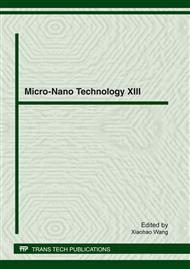p.201
p.207
p.211
p.216
p.222
p.227
p.232
p.236
p.240
Simulation of Injection Molding of Ultra-Thin Light Guide Plate with Hemispherical Microstructures
Abstract:
Micro injection molding is used widely owing to its high accuracy, high production efficiency, low cost and can fabricate products with complex structures. For optical components, the residual stress is a main element for quality. In this research, the light guide plate is used as the study object. The light guide plate was designed by software Pro-E, and was simulated by Moldflow for filling process. Orthogonal method was used in this research. The most important factor that affects residual stress level is mold temperature. The level of the different process parameters on residual stress are mold temperature, packing time, packing pressure and melt temperature.
Info:
Periodical:
Pages:
222-226
Citation:
Online since:
February 2012
Authors:
Price:
Сopyright:
© 2012 Trans Tech Publications Ltd. All Rights Reserved
Share:
Citation:


